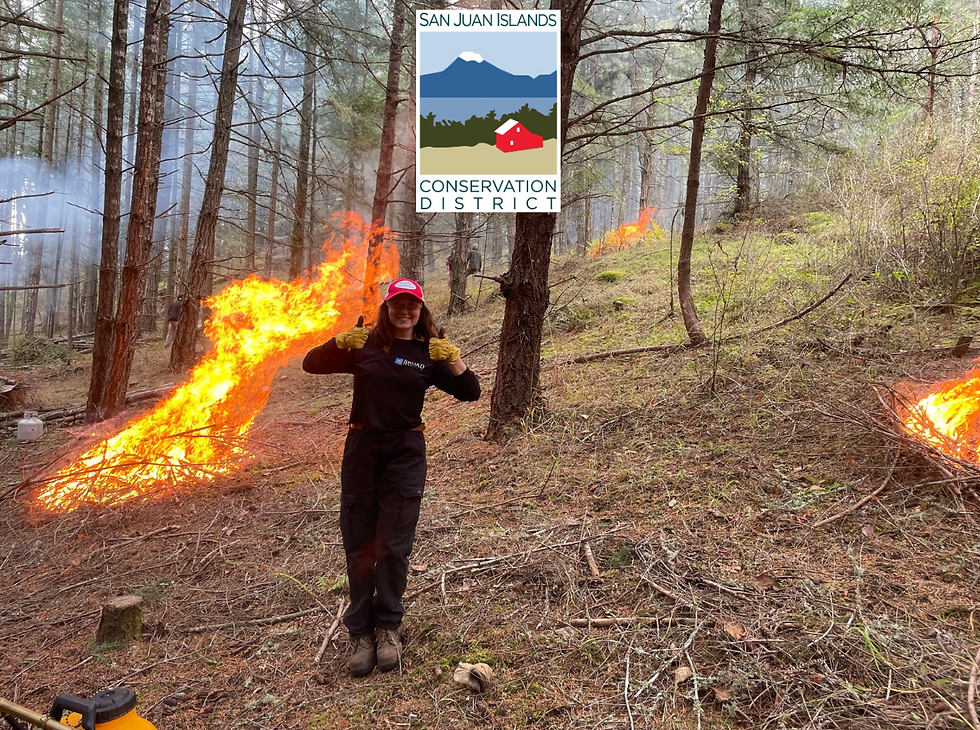Best Management Practices (BMP) Survey
- SJICD
- Jan 26, 2023
- 3 min read
Updated: Jan 27, 2023
Thank you to everyone who took our Best Management Practices (BMP) Survey!
Congratulations to our 21 raffle winners. Winners will be receiving either a water meter, soil tests, or pasture sticks. Didn’t get a chance to fill out the survey? Want to help us tell the story that agricultural viability and critical areas protection are not mutually exclusive?
While the raffle is now closed, your participation in the survey is still valued. Click here to share your stewardship activities and highlight the great work happening around San Juan County.
Raffle Winners Include:
Kathy Morris
Rick Perry
Amanda Zee
Charles Dalton
Warwick Hubber
Sandy Richard
Linda Lee Hudson
Lori Ann David
Are you a farmer or agricultural producer in San Juan County?
The San Juan Islands Conservation District (SJICD) wants you! We are requesting that all farmers and agricultural producers in San Juan County please take a short survey to identify Best Management Practices (BMPs) that are currently in place on the land you farm or that may be beneficial to your operation in the future. The survey takes roughly fifteen minutes and can be found online here: https://www.sanjuanislandscd.org/vsp-survey.
A short list of common Best Management Practices is provided in the survey for users to choose from. BMPs are conservation practices that focus on resource concerns with soil, water, animals, plants, air, humans, energy, and climate change. BMPs can be used to address resource concerns such as poor water quality, degraded soil health, lack of biodiversity, etc. For farmers in the San Juans, these often include infrastructure like fencing to exclude livestock from surface and groundwater; “heavy use areas” to prevent occurrences of high mud and erosion in animal confinement areas; covered manure and composting facilities to improve the reuse of nutrients and reduce runoff into waterways; and drainage systems for water flow issues, among others.
Why is the SJICD tracking BMPs?
As part of the Voluntary Stewardship Program (VSP), the Conservation District is conducting this inventory of infrastructure in place to protect and enhance critical areas in the county. VSP was implemented in San Juan County in 2018 as an alternative to the Critical Area Ordinance (CAO) and regulations on lands where agricultural activities take place. Rather than leading with enforcement, counties enrolled in VSP use financial incentives and voluntary engagement with agricultural landowners to establish actions that protect critical areas and improve long-term agricultural viability. VSP defines five “critical areas” with fragile and/or hazardous natural resources: wetlands, frequently flooded areas, critical aquifer recharge areas, geologically hazardous areas, and fish and wildlife habitats.
The San Juan Islands Conservation District is tracking and measuring the effectiveness of practices installed in the county over the last decade. It is important to understand if conditions of natural resources are improving, declining, or remaining the same. This will allow us to further improve our ability to offer assistance with practices in the future and ensure that community conservation goals are being met through voluntary efforts. If VSP were to fail, agricultural activities would be subject to regulation under the Washington State Growth Management Act.
What does this mean for you?
Because of the unique drainage features of the islands, all of San Juan County is considered a critical aquifer recharge area. This means that all agricultural parcels within the county contain critical areas and are eligible to participate in VSP. Interested parties can receive technical assistance or seek financial assistance in the form of cost share funding to implement BMPs on the farm. Your participation helps to ensure continued program success.





Comments